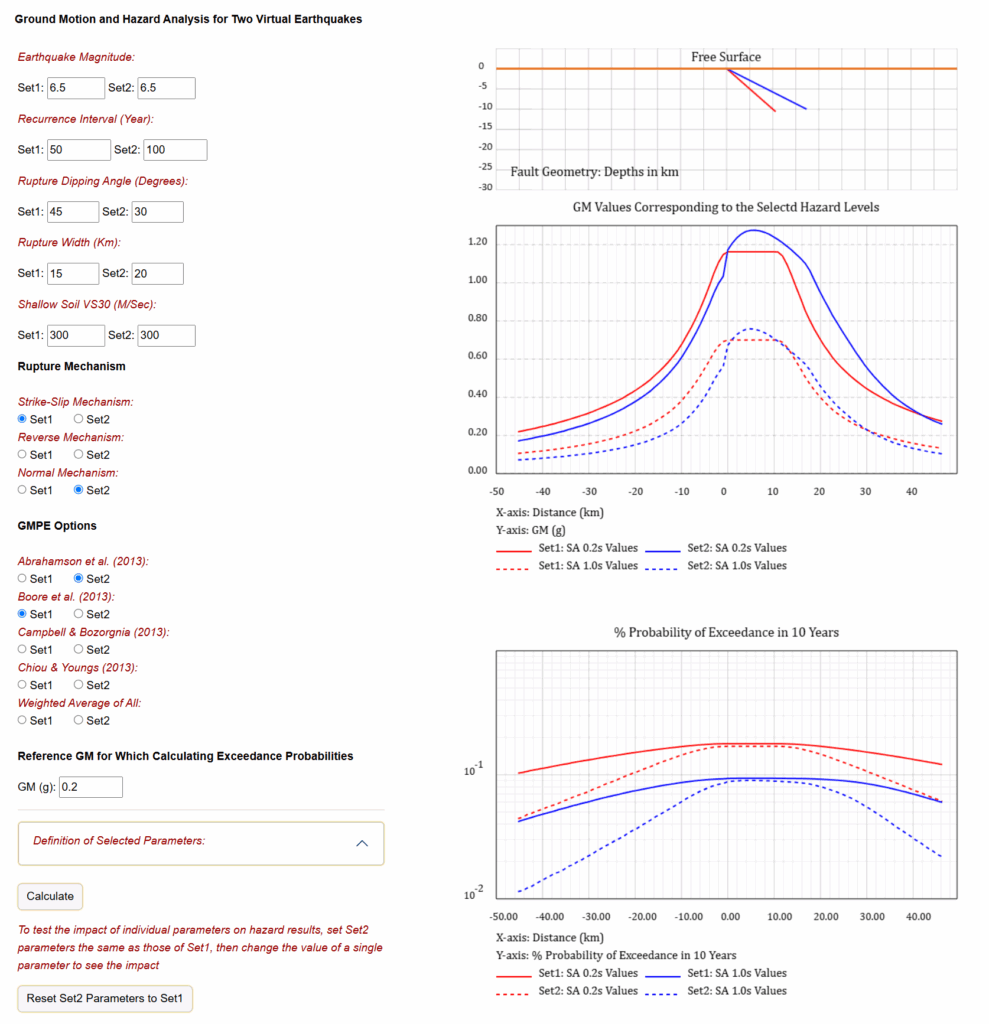- Sand Box: Hazard Analysis for Earthquakes on Virtual Faults
- Probabilistic Seismic Hazard Analysis: Technical Details
In seismically active regions, buildings will experience different ground motions (GMs) intensities from earthquakes on regional faults and unknown sources. The task of seismic hazard analysis (SHA) is to quantify the expected annual frequencies that a site or a building will experience GMs higher than different assumed levels, often referred to as the GMs exceedance rates.
Significant uncertainties exist in future earthquake occurrences, locations, magnitudes, and ground motions. Considering these uncertainties, the science and art of SHA are to estimate the most robust and unbiased exceedance rates for GMs at sites of interest. Also considering the uncertainties, robust SHA cannot be deterministic. All modern SHAs use probabilistic models to formulate the impacts of uncertainties on SHA. This is referred to as the probabilistic seismic hazard analysis (PSHA).
A full-scale regional PSHA is a complex procedure that requires a large amount of data and analytical capabilities. Many different geologic, tectonic, and seismologic factors impact earthquake hazard analysis. The objectives of this page, the link, and the designed Sand Box are to allow users to appreciate better and examine how different fault, earthquake, and ground motion parameters impact the PSHA results.
The Sand Box, see Figure 1, allows users to design two sets of characteristic earthquakes on virtual faults to calculate GMs and exceedance probabilities at sites along a line normal to the fault strikes. The main objectives are to allow users to examine the impacts of the fault geometry, characteristic earthquake magnitude and recurrence interval, faulting mechanism, GM prediction equation, and shallow soil condition on short and long-period response spectral estimates and the related exceedance probabilities for user-defined sites crossing the fault.
The following is a sample page from the Sand Box. The links at the top of the page provide technical details of GM simulation and probabilistic hazard analysis.

Figure 1.